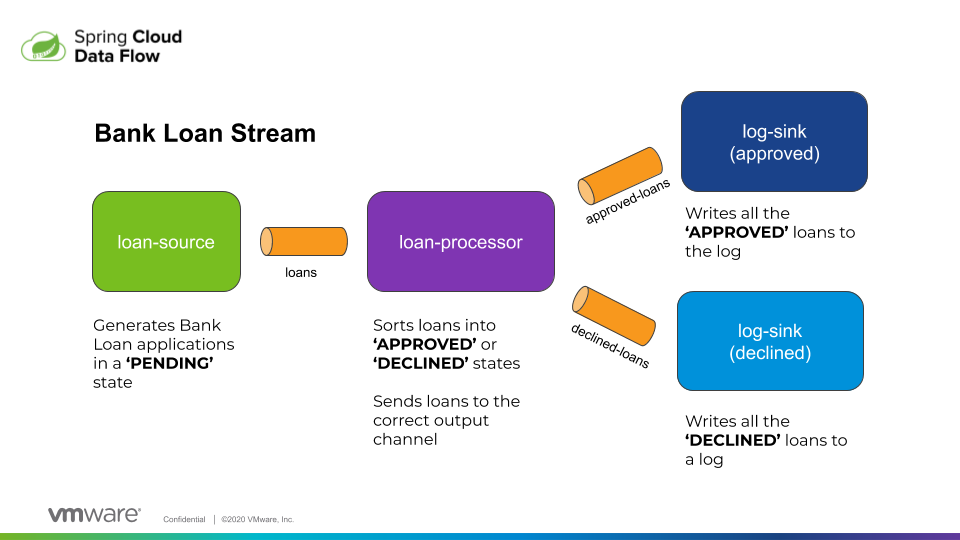Spring Cloud Data Flow Sample
Building Microservice Data Streams With Spring Cloud Data Flow
Download ZIP View on GitHubSpring Cloud Data Flow Demo
Bank Loan Data Processing Stream
This demo code shows how to construct a streaming application in Spring Cloud Data Flow using Java applications written in Spring Cloud Stream.
The demo code in this repository models a simple Bank Loan processing stream whereby new loans are generated and then sorted into APPROVED and DECLINED states by a loan processor.
By default, the loan applications are confugured to expect RabbitMQ to provide the underlying messaging infrastucture (although this could be switched to Apache Kafka with very little effort).
Spring Cloud Data Flow is important because it takes care of installing, starting and stopping the applications at runtime, and provides the messaging backbone which the applications use to communicate.

How it works:
The loan-source and loan-processor applications are compiled, packaged, and containerized by the Spring Boot Maven plugin. Once built (with spring-boot:build-image) the containers are then pushed to Docker Hub where they are then publicly accessible. The log-sink application is provided by Spring Cloud Data Flow as one of it’s ready to use components (although not installed by default).
Scripts in the scripts folder deploy the stream using the Spring Cloud Data Flow CLI. The register-apps.sh script registers the applications. The build-flow.sh script defines and deploys the loan processing stream to dataflow using the properties provided in a text file. The flow defined in the script echo’s the diagram above. Note that each of the applications is registered using the app type and deployed by Data Flow in parrallel (||). This is because the loan-processor uses a single-input with multiple-outputs approach.
During the deployment of the stream, Spring Cloud Data Flow takes care of installing the applications onto the infrastructure (K8s, CloudFoundry, etc.). Spring Cloud Data Flow will set the various properties that allow the applications to adapt to the infrastructure provided at runtime (IP’s, ports, etc.)
Once deployed, the logs emitted from the loan-source, loan-processor, and log-sink components can be examined for their output.